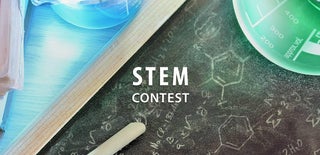Introduction: Tinkercad Name Patterns
This project uses students' creativity to show their understanding of geometry, angles, measurement and patterns
If your students have access to computers in your classroom, I urge you to check out Tinkercad. It's free, it's super engaging for kids. I've been using it with 4th and 5th graders, but I've heard it is appropriate for all ages. Someone even said that kindergarten kids have fun with it. It is absolutely great for high school and college. Tinkercad offers endless opportunities for exploration, creativity and innovation. Tinkercad gives kids a chance to "build" their ideas in ways that they may not be able to do yet with materials.
This project asks students to create patterns with their names. I'll show you a few ideas that I shared with my students to get them started. Like patterns, the possibilities are endless!
Step 1: Checkerboard Patterns
1. Using the “text” feature in Basic Shapes, write your name and add it to your workplane (or, you can write your name or your initials using the “scribble” feature).
2. Adjust the size of the letters to make a square with your name. Depending on how long your name is, this could take different forms. For the blue and yellow example above, I wrote my initials using the “scribble” feature and then rotated them to make each square. “Iris” is a short name, so I just wrote it twice, one on top of the other. “Joseph,” is a little longer, so I needed to make a stack of 3.
3. Once you have made a square, you can copy it several times to make a checkerboard pattern. You can play around with alternating colors, rotations, heights, etc. Or you can make one square with your first name, and the alternating squares with your last name. Like I mentioned in the first step, the variations are endless.
4. Once you have made your two alternating squares, you can copy them and paste them into a 2 x 2 unit. And then copy and paste the 2 x2 unit. Then you can copy and paste the 2x2 units into 4 x 4 units. And so on.
Step 2: Make a Tile Design
1. Start with copying your name 4 times
2. Using the rotation tool, rotate 3 of the names by 90, 180 and 270 degrees to make a border.
3. Create a tile design by continuing to add different sizes or your name and rotating them to fit inside the border. Students can play around with different angles: 45, 90, 135 and 180 degrees. Once they start playing around with different angles, they will come up with other ideas.
4. For variation, you can play around with colors, and/or add your last name in the pattern.
Step 3: Make a Hexagon or an Octagon Using the Rotation Function and Math!
Write and copy your name as many times as you will need for the sides.
Ask students: If a circle is 360 degrees, what will the angles be for a hexagon or an octagon?
You can make the various "onion layers" by selecting your shape, copying it and then making the copy smaller (to do this, you will need to group together all the sides of the shape)
Step 4: Tessellations
Even though we had explored tessellations earlier in the year, this was the most complicated and challenging for the 5th graders. While there are many ways to make a tessellations, I kept it simple by having students follow these steps:
1. Using text tool, write your first name.
2. Then write your last name and place it underneath, aligning both names to the left. Unless your first and last name are the same length, this should make an uneven shape. If your first and last name are different shapes, make one smaller so the 2 names don't make a perfect rectangle.
3. Group the two names together. Copy and paste the group 3 times so you have a set of 4 altogether.
4. Rotate the groups 90, 180 and 270 degrees. Assemble them together, meeting in the center to form a kind of star (see the first picture above, "Moira Rose").
5. Group this "star" together, and copy and paste it 4 times. Arrange the newly formed objects so they fit together in a pattern. There is no one way to do this; play around and see what works for you. Continue grouping, copying, pasting and arranging in the same pattern.
6. Like the other name patterns, you can vary the color, size and shape of the names.
Step 5: Have Fun and Share Your Results!
I hope this lesson provides your students with a structured and fun way to explore many of the functions in Tinkercad. If you have a color printer, it would be cool to print out everyone's name for a class quilt bulletin board.
If you try this out, please share pictures. It would be really fun to see what everyone comes up with!
This lesson was inspired by another Instructable; please check it out:
https://www.instructables.com/3D-Quilt-Codes-the-Tinkercad-Cypher/

Participated in the
STEM Contest













